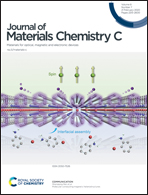Boosting the photocatalytic activity of BiOX under solar light via selective crystal facet growth†
Abstract
The selective crystal facet growth of BiOX (X = Cl, Br, I) is very significant since each facet possesses different physicochemical properties. In this study, polyvinylpyrrolidone (PVP), a structure directing agent, was unprecedentedly introduced to modulate the crystal facet growth of BiOX to obtain BiOX/PVP with more (110) active facet exposure, for the first time. The exposure of the (110) crystal surface of BiOX due to the introduction of PVP is comprehensively explained at the molecular level. A possible application is the photodegradation of dyes, such as rhodamine B (RhB), from wastewater as more superoxide radicals are generated compared to the pure BiOX sample under identical visible light irradiation conditions. According to first-principles calculations, the (110) crystal face has a higher electron density, allowing it to generate free electrons more easily. In comparison with pure BiOCl, a higher (110) active facet exposure for BiOCl/PVP prolonged the lifetimes of photoinduced carries and enhanced the photocatalytic activity. Herein, the enhancement mechanism of photoactivity was explained via various experiments and theoretical calculations in detail.



 Please wait while we load your content...
Please wait while we load your content...